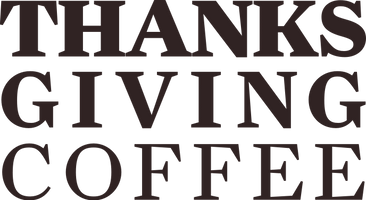In the early years of specialty coffee, before “sustainability” was a familiar word, a handful of roasters and importers began to ask for more of the coffee trade. What if quality wasn’t just in the cup, but in the care behind it? What if environmental responsibility and economic fairness were part of the definition of great coffee?
A Just Cup: The Story Behind the First Environmental Committee in Specialty Coffee
This is the story of how those questions led to the creation of the first Environmental Committee within the Specialty Coffee Association of America (SCAA) - and how one small roaster on the Mendocino Coast helped spark that shift. Thanksgiving Coffee Company's co-founder Paul Katzeff was among those early voices. His journey began with a simple desire to source flavorful beans and quickly evolved into something much deeper.
Paul Katzeff in the early days with original coffee roaster
From Flavor to Justice: Nicaragua, 1985
In 1985, Paul traveled to Nicaragua at the request of a nurse who had returned from the war zone with a sample of coffee and a plea: support small-scale farmers by helping them sell their crop. At the time, Paul was President of the newly formed SCAA and still searching for “the perfect cup.”
But once he arrived in the mountains, what he witnessed changed him forever: families living without electricity or clean water, cooking in smoke-filled homes, doing their best to survive. “Coffee flavor was no longer my obsession,” Paul later said. “I came home and changed our motto from ‘In Search of the Perfect Cup’ to ‘Not Just a Cup, But a Just Cup.’”
What began as a sourcing trip became a calling.
Women cooking in Nicaragua Photo by Paul Katzeff
Roasting Coffee, Nicaragua style, 1985
Elder Grinding Coffee - photo by Paul Katzeff
Paul Playing Ball, Nicagarua 1985
Rewriting the Rules of Trade
After President Reagan imposed an embargo on Nicaragua, Paul rerouted coffee shipments through Canada, where a Fair Trade roaster helped him finish the coffee and legally import it to the U.S. He then launched one of the first cause-driven blends: Café por la Paz (Coffee for Peace), donating 25 cents from every bag to support farming cooperatives in Nicaragua.
These weren’t marketing strategies. They were moral commitments, rooted in firsthand experience and a belief that business could be a tool for justice.
“We didn’t call it sustainability,” Paul recalls. “We just did the work.”
From Observation to Action
Throughout the late 1980s and 1990s, Thanksgiving Coffee took concrete environmental action.
- We financed the planting of 75,000 shade trees in Ethiopia through Trees for the Future.
- We converted our delivery fleet to biodiesel, the first commercial fleet in California to do so.
- Our team paid attention to soil health, biodiversity, and forest preservation before there were certifications that would then require it.
The company soon began receiving awards and recognition for our work.
Thanksgiving Coffee Company and Delivery Van circa 1990's
Solidaridad Coop, Shade Grown Song Bird Coffee Farmers - Nicaragua 1996 photo by Paul Katzeff
Beyond Organics: A New Framework
In 1996, Paul presented a groundbreaking green coffee buying framework at the first Sustainability and Coffee Conference hosted by the Smithsonian. Called “Beyond Organics,” the system recognized a range of environmental and social practices: shade-grown coffee, indigenous land stewardship, cooperative participation, biodiversity protection, and more.
The idea was simple: not all progress looks the same, but every step matters.
Read Original Green Buying Criteria here
Building a Committee with a Conscience
As more members of the SCAA began asking hard questions, Paul and a handful of allies proposed forming the first Environmental Committee. It was an uphill battle.
“There was resistance,” Paul admits. “Many in the industry believed a trade association wasn’t the place for politics or activism. But we weren’t pushing politics. We were elevating values.”
That committee—eventually renamed the Sustainability Committee—brought structure, credibility, and accountability to the growing movement. It evaluated certifications, supported origin-based initiatives, and helped small brands tell honest, impactful stories.
2000: A Defining Year
When Paul chaired the SCAA’s 12th Annual Conference in San Francisco, he centered the event around three themes: Quality, Sustainability, and Social Responsibility. It marked a turning point.
During his keynote, he challenged the industry to consider the human cost of low coffee prices. He announced a USAID grant to build cupping labs in Nicaragua, giving farmers tools to taste, evaluate, and price their own coffee for the first time.
The message was clear: coffee is about people.
Paul with a Campasino and connecting with the children of Nicaragua
What We Built Together
Since then, the specialty coffee industry has changed. Terms like fair trade, carbon-neutral, and regenerative are more common. But behind those terms are decades of work from small companies like ours.
Thanksgiving Coffee:
- Supported origin cooperatives through financial transparency
- Donated to reforestation and clean water initiatives
- Converted our delivery fleet to biofuel
- Featured farmers on our packaging before it was common practice
- Advocated for certifications with rigor, not shortcuts
Why This Story Matters
As the coffee industry continues to face global challenges such as climate change, greenwashing, and pricing instability - it helps to remember where the values came from.
We share this story to honor the path we’ve walked with our partners, our customers, and our peers. We’re still learning. We’re still evolving. And we’re still committed to using coffee as a tool for possibility.
Shop the Coffees That Carry This Legacy
Paul’s Blend – Founders’ Legacy Roast
A bold, meaningful medium-dark roast named for our co-founder, honoring 50+ years of leadership in coffee and justice.
Or Try the Origin Masters
These small-lot coffees are from pioneering cooperatives including: UCA Miraflor and CECOCAFEN
the co-architects of the world’s first farmer-owned cupping labs.
Lavender Grace is the Sustainability Consultant for Thanksgiving Coffee Company
Stay in touch - we like to stay connected




